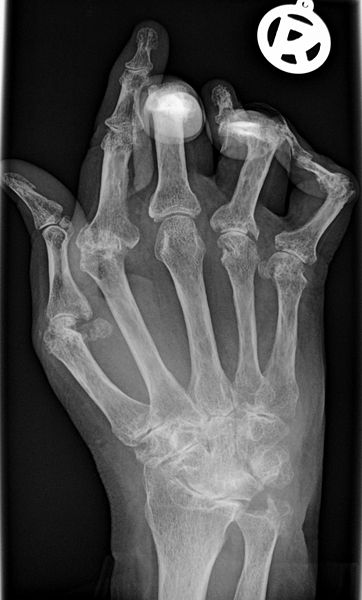A new discovery has shed light on the mechanism by which joints are damaged by rheumatoid arthritis, scientists announced this week.
 Writing in this week's edition of the journal PLoS Medicine Barts and the London Medical school researcher Constantino Pitzalis and his colleagues collected samples from the inflamed joints of patients affected by the disease, which affects about 1% of the adult population and occurs when the immune system mistakes healthy joints for hostile tissue and attacks them.
Writing in this week's edition of the journal PLoS Medicine Barts and the London Medical school researcher Constantino Pitzalis and his colleagues collected samples from the inflamed joints of patients affected by the disease, which affects about 1% of the adult population and occurs when the immune system mistakes healthy joints for hostile tissue and attacks them.
"What we have found is that a class of infection-fighting white blood cells, called B lymphocytes, make their way to affected joints where they set up structures called germinal centres. These function as antibody factories, producing antibodies that then attack the joint tissue," says Pitzalis.
To prove that this was the case the team injected immune cells from rheumatoid patients' joints into the skins of mice genetically programmed to lack an immune system of their own. For 90 days the team were able to detect the antibodies in the blood of these so-called SCID (Severe Combined Immuno-Deficiency) mice.
"This shows that the germinal centres are sufficient to produce the antibodies directly in the joint," Pitzalis explains.
Apart from providing new insights into the mechanisms of rheumatoid arthritis, which costs the NHS more than £1.2 billion per year to treat affected patients, the new research may also help with the development of better drugs and better use of the drugs we do have to control the disease.
"To stop the damage done by rheumatoid arthritis we need to selectively kill the B-cells making the rogue antibodies," says Pitzalis. "This animal model can help us to do develop cost-saving ways to do that."









Comments
Add a comment